-
 Bitcoin
Bitcoin $107,247.2038
-0.18% -
 Ethereum
Ethereum $2,424.7947
0.34% -
 Tether USDt
Tether USDt $1.0003
-0.02% -
 XRP
XRP $2.1171
-3.33% -
 BNB
BNB $645.6618
0.06% -
 Solana
Solana $141.5898
-1.32% -
 USDC
USDC $0.9998
0.00% -
 TRON
TRON $0.2710
-0.41% -
 Dogecoin
Dogecoin $0.1602
-2.99% -
 Cardano
Cardano $0.5553
-2.28% -
 Hyperliquid
Hyperliquid $36.3019
-2.42% -
 Bitcoin Cash
Bitcoin Cash $491.7212
2.04% -
 Chainlink
Chainlink $13.0810
-0.23% -
 Sui
Sui $2.6080
-5.06% -
 UNUS SED LEO
UNUS SED LEO $9.0040
-0.05% -
 Stellar
Stellar $0.2350
-3.06% -
 Avalanche
Avalanche $17.2294
-2.31% -
 Toncoin
Toncoin $2.8075
-1.05% -
 Shiba Inu
Shiba Inu $0.0...01121
-3.43% -
 Litecoin
Litecoin $84.2215
-0.32% -
 Hedera
Hedera $0.1429
-4.88% -
 Monero
Monero $312.2199
-0.90% -
 Dai
Dai $0.9997
-0.01% -
 Ethena USDe
Ethena USDe $0.9999
-0.02% -
 Polkadot
Polkadot $3.2973
-2.60% -
 Bitget Token
Bitget Token $4.4742
3.12% -
 Pi
Pi $0.5631
-10.10% -
 Uniswap
Uniswap $6.7817
-2.06% -
 Pepe
Pepe $0.0...09252
-3.74% -
 Aave
Aave $251.3830
-2.24%
Can I add positions when the volume falls back to the 10-week line?
A healthy pullback to the 10-week moving average with declining volume often signals a favorable entry point in a bullish crypto trend.
Jun 26, 2025 at 11:07 pm
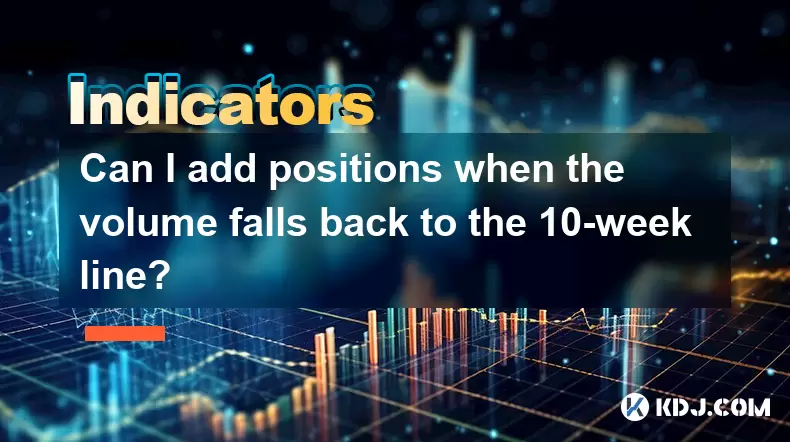
Understanding the 10-Week Moving Average in Cryptocurrency Trading
In cryptocurrency trading, technical indicators play a crucial role in decision-making. The 10-week moving average is one such indicator that helps traders identify medium-term trends and potential entry points. This average is calculated by taking the closing prices of the last 70 trading days (approximately 10 weeks) and averaging them. Traders often use this line as a dynamic support or resistance level.
When a cryptocurrency's price pulls back to the 10-week moving average, it can signal a potential retracement within an ongoing trend. Many traders view this as a possible opportunity to add positions, especially if the overall trend remains bullish. However, volume plays a critical role in confirming whether such a pullback is genuine or just a temporary correction.
Key Takeaway: The 10-week moving average acts as a key reference point for identifying healthy pullbacks in trending markets.
The Role of Volume in Confirming Pullbacks
Volume is a powerful tool when assessing the strength of a price movement. A drop in volume during a pullback to the 10-week line may indicate that selling pressure is weakening. Conversely, high volume on a downward move could suggest strong bearish momentum, which might invalidate the pullback.
Traders often look for a volume contraction when the price approaches the 10-week moving average. If the volume declines while the price holds near or above this line, it suggests that sellers are losing conviction. This can be interpreted as a sign that the uptrend is still intact and that the pullback offers a favorable risk-reward scenario for adding long positions.
Important Insight: A declining volume during a pullback supports the idea of a healthy correction rather than a trend reversal.
How to Identify a Valid Pullback to the 10-Week Line
Not all pullbacks are equal. To determine whether a pullback to the 10-week moving average is valid, traders should consider several factors:
- Trend Confirmation: Ensure that the broader trend is still bullish. Price should remain above the 10-week line after a prior upward movement.
- Volume Analysis: Look for a noticeable decline in volume during the pullback. Lower volume indicates reduced selling pressure.
- Candlestick Patterns: Watch for bullish candlestick formations like hammers, engulfing patterns, or morning stars near the 10-week line.
- Support Test: Observe how the price reacts around the 10-week line. A clean bounce with increasing volume on the rebound adds credibility to the setup.
These criteria help filter out false signals and increase the probability of successful entries when adding to existing positions.
Critical Step: Always confirm the pullback with multiple indicators and not just price action alone.
Adding Positions Strategically Around the 10-Week Line
If the conditions align—price pulling back to the 10-week line, volume dropping off, and trend remaining bullish—it may be a suitable time to consider adding to your position. Here’s how to approach it methodically:
- Determine Position Size: Decide what percentage of your portfolio you're willing to allocate to this additional entry. Avoid overexposure even if the setup looks strong.
- Use Limit Orders: Place buy orders slightly above the 10-week line to ensure execution without chasing the price higher.
- Set Stop-Loss Levels: Place stop-loss orders below the recent swing low or slightly under the 10-week line to manage downside risk.
- Monitor Volume Recovery: After entering, watch for a return of buying volume. A surge in volume post-pullback confirms renewed bullish interest.
By following these steps, traders can maintain discipline and avoid emotional decisions when considering additions to their positions.
Essential Practice: Always predefine your entry, stop-loss, and target levels before placing any trade.
Common Mistakes to Avoid When Trading the 10-Week Line
Even experienced traders can fall into traps when interpreting technical setups around the 10-week moving average. Some common errors include:
- Misreading the Trend: Entering a trade based solely on the 10-week line without confirming the broader trend can lead to losses.
- Ignoring Volume: Failing to assess volume dynamics can result in mistaking a reversal for a healthy pullback.
- Overleveraging: Adding too aggressively on a pullback without proper risk management increases exposure.
- Late Entries: Waiting too long to enter after the pullback has already reversed may lead to poor risk-reward ratios.
Avoiding these pitfalls ensures that your strategy remains robust and grounded in sound technical analysis principles.
Critical Reminder: Discipline and consistency are more valuable than predicting every market move correctly.
Frequently Asked Questions
Q: Does the 10-week moving average work better on certain cryptocurrencies?
A: It tends to perform well on major cryptocurrencies like Bitcoin and Ethereum due to their higher liquidity and clearer trend structures. However, it can also be applied to altcoins with sufficient trading volume and chart history.
Q: Can I use other moving averages alongside the 10-week line?
A: Yes, combining it with shorter-term averages like the 5-week or 20-week lines can provide additional confirmation and improve timing accuracy.
Q: What if the price breaks below the 10-week line but then quickly recovers?
A: That behavior can signal a test of support. If volume remains low during the break and buying pressure returns afterward, it may still be part of a healthy uptrend.
Q: How often should I check the 10-week moving average?
A: Weekly charts are ideal for tracking this line, so checking once per week or using automated alerts can help keep you updated without constant monitoring.
Disclaimer:info@kdj.com
The information provided is not trading advice. kdj.com does not assume any responsibility for any investments made based on the information provided in this article. Cryptocurrencies are highly volatile and it is highly recommended that you invest with caution after thorough research!
If you believe that the content used on this website infringes your copyright, please contact us immediately (info@kdj.com) and we will delete it promptly.
- CESS, TGE, and Decentralized AI: A New Era for Data Sovereignty
- 2025-06-27 03:52:13
- Dogecoin's Comeback vs. Little Pepe's 50x Potential: Where's the Smart Money Going?
- 2025-06-27 02:50:12
- Cryptos, Troller Cat, and ROI: A New Era of Meme Coin Investing?
- 2025-06-27 02:32:05
- USDT on TRON: Stablecoin Supremacy in the Digital Age
- 2025-06-27 03:52:13
- Trump, Crypto, and Stablecoins: A New York Minute on the Digital Frontier
- 2025-06-27 02:54:00
- WLFI Token's Transferability, USD1 Stablecoin Audit, and Trump's Crypto Play: What's the Deal?
- 2025-06-27 03:56:47
Related knowledge
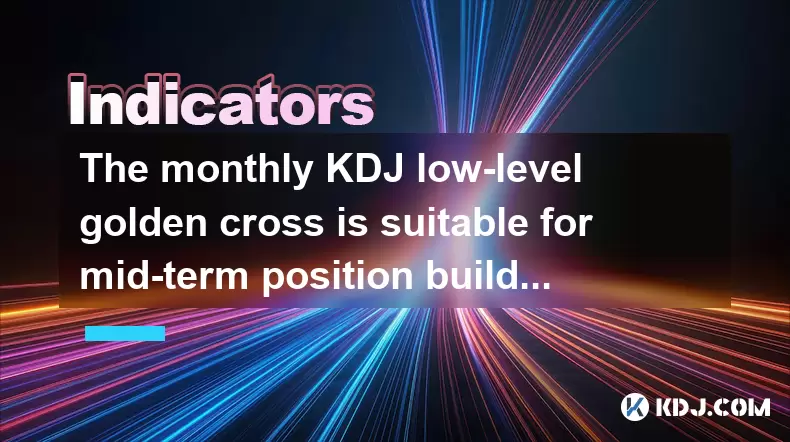
The monthly KDJ low-level golden cross is suitable for mid-term position building?
Jun 27,2025 at 03:14am
Understanding the Monthly KDJ IndicatorThe KDJ indicator, also known as the stochastic oscillator, is a momentum tool widely used in technical analysis within the cryptocurrency market. It consists of three lines: the K line, the D line, and the J line. These lines help traders identify overbought or oversold conditions, potential trend reversals, and e...
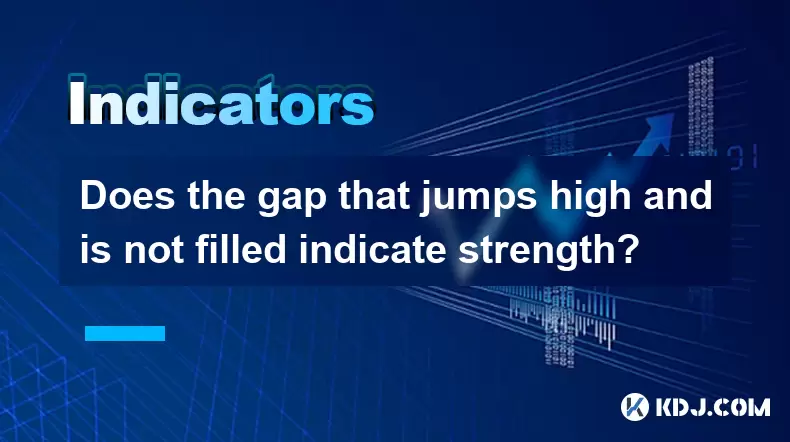
Does the gap that jumps high and is not filled indicate strength?
Jun 26,2025 at 11:36pm
Understanding the Concept of Gaps in Cryptocurrency ChartsIn the world of cryptocurrency trading, gaps refer to areas on a price chart where the price of an asset jumps significantly up or down, leaving no trading activity between two specific points. These gaps typically occur due to after-hours news, market sentiment shifts, or sudden influxes of buy/...
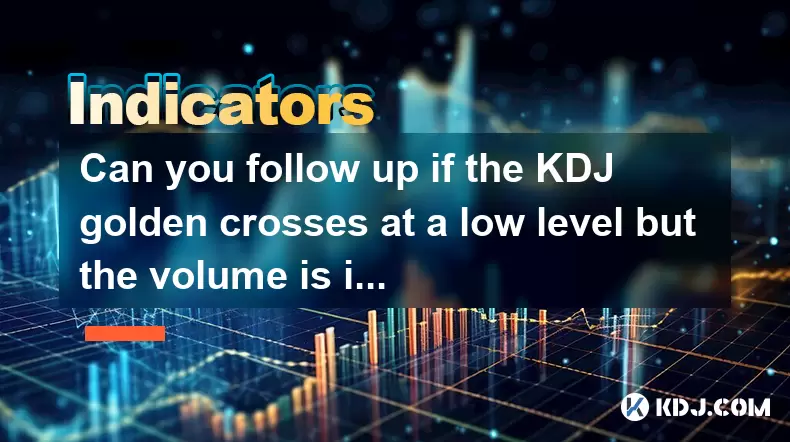
Can you follow up if the KDJ golden crosses at a low level but the volume is insufficient?
Jun 27,2025 at 12:01am
Understanding the KDJ Indicator in Cryptocurrency TradingThe KDJ indicator, also known as the stochastic oscillator, is a popular technical analysis tool used by cryptocurrency traders to identify potential buy and sell signals. It consists of three lines: the %K line, the %D line (which is a moving average of %K), and the %J line (a projection of the t...
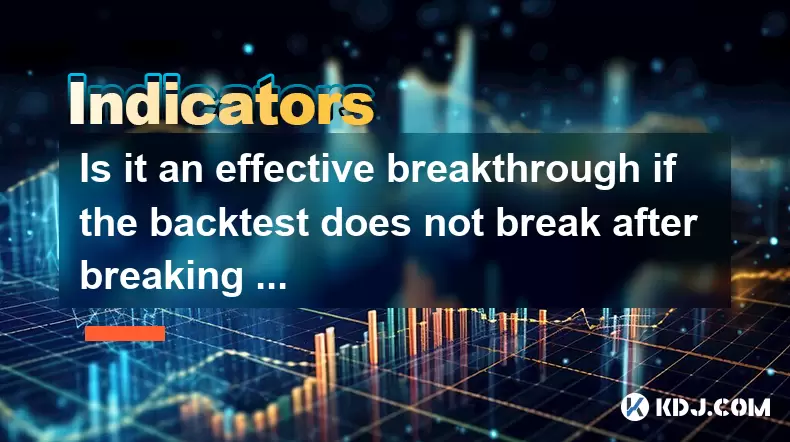
Is it an effective breakthrough if the backtest does not break after breaking through the neckline?
Jun 26,2025 at 10:08pm
Understanding the Role of Blockchain in Secure TransactionsBlockchain technology is at the heart of secure cryptocurrency transactions. Each block contains a list of transactions, and once recorded, altering past blocks becomes nearly impossible without network consensus. This immutability ensures that once a transaction is confirmed, it cannot be rever...
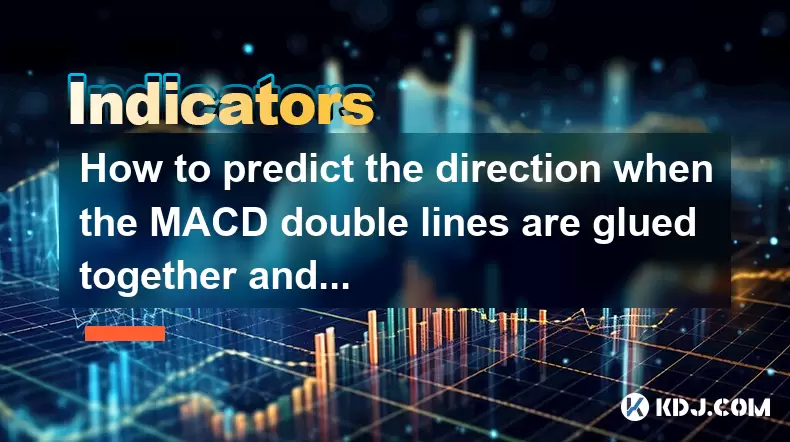
How to predict the direction when the MACD double lines are glued together and not separated?
Jun 27,2025 at 04:30am
Understanding the MACD Indicator and Its ComponentsThe Moving Average Convergence Divergence (MACD) is a popular technical indicator used in cryptocurrency trading. It consists of three main components: the MACD line, the signal line, and the histogram. The MACD line is calculated by subtracting the 26-period Exponential Moving Average (EMA) from the 12...
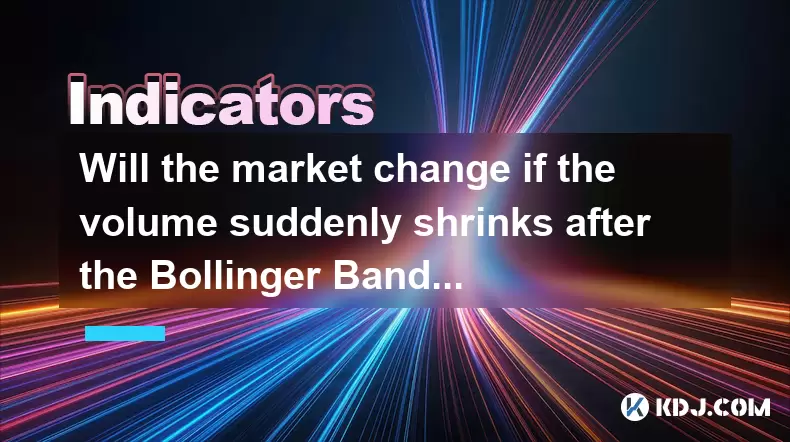
Will the market change if the volume suddenly shrinks after the Bollinger Bands open?
Jun 26,2025 at 09:56pm
Understanding the Bollinger Bands MechanismBollinger Bands are a widely used technical analysis tool that consists of a moving average and two standard deviation lines plotted above and below it. These bands dynamically adjust to price volatility, expanding during periods of high market activity and contracting when volatility decreases. Traders use thi...

The monthly KDJ low-level golden cross is suitable for mid-term position building?
Jun 27,2025 at 03:14am
Understanding the Monthly KDJ IndicatorThe KDJ indicator, also known as the stochastic oscillator, is a momentum tool widely used in technical analysis within the cryptocurrency market. It consists of three lines: the K line, the D line, and the J line. These lines help traders identify overbought or oversold conditions, potential trend reversals, and e...

Does the gap that jumps high and is not filled indicate strength?
Jun 26,2025 at 11:36pm
Understanding the Concept of Gaps in Cryptocurrency ChartsIn the world of cryptocurrency trading, gaps refer to areas on a price chart where the price of an asset jumps significantly up or down, leaving no trading activity between two specific points. These gaps typically occur due to after-hours news, market sentiment shifts, or sudden influxes of buy/...

Can you follow up if the KDJ golden crosses at a low level but the volume is insufficient?
Jun 27,2025 at 12:01am
Understanding the KDJ Indicator in Cryptocurrency TradingThe KDJ indicator, also known as the stochastic oscillator, is a popular technical analysis tool used by cryptocurrency traders to identify potential buy and sell signals. It consists of three lines: the %K line, the %D line (which is a moving average of %K), and the %J line (a projection of the t...

Is it an effective breakthrough if the backtest does not break after breaking through the neckline?
Jun 26,2025 at 10:08pm
Understanding the Role of Blockchain in Secure TransactionsBlockchain technology is at the heart of secure cryptocurrency transactions. Each block contains a list of transactions, and once recorded, altering past blocks becomes nearly impossible without network consensus. This immutability ensures that once a transaction is confirmed, it cannot be rever...

How to predict the direction when the MACD double lines are glued together and not separated?
Jun 27,2025 at 04:30am
Understanding the MACD Indicator and Its ComponentsThe Moving Average Convergence Divergence (MACD) is a popular technical indicator used in cryptocurrency trading. It consists of three main components: the MACD line, the signal line, and the histogram. The MACD line is calculated by subtracting the 26-period Exponential Moving Average (EMA) from the 12...

Will the market change if the volume suddenly shrinks after the Bollinger Bands open?
Jun 26,2025 at 09:56pm
Understanding the Bollinger Bands MechanismBollinger Bands are a widely used technical analysis tool that consists of a moving average and two standard deviation lines plotted above and below it. These bands dynamically adjust to price volatility, expanding during periods of high market activity and contracting when volatility decreases. Traders use thi...
See all articles
























































































